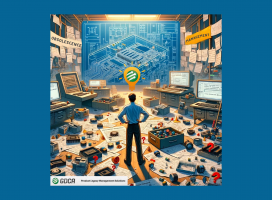Pre-Stocking is not your only option
Using an Obsolescence Management Tool to Support a Wider Sustainment Solution
Obsolescence is inevitable. All parts, systems, and boards will eventually become obsolete, and for vital systems requiring life cycles of a decade or more, obsolescence becomes a looming and expensive problem.
Traditionally, pre-stocking has been used to solve the obsolescence issue and it is a valuable tool in the right circumstances. Receiving an EOL notice and proceeding to pre-stock boards is an effective approach when lifecycle forecasting is clearly defined and the price point of the LTB is within budget to buy all the product that will be needed to satisfy the entirety of the lifecycle requirements. Similarly, if an upgrade is planned and a finite number of boards are required to support the effort, then pre-stocking is an especially solid solution.
However, pre-stocking starts to break down as a solution when dealing with critical parts which may result in the need for a system redesign. This method can also be challenging for boards with long life cycles, which are notoriously difficult to forecast, and especially problematic when the high volumes are required. In cases such as these, you can prestock all of the necessary parts, but you now deal with a host of other inventory issues, such as storage costs, void warranties, inventory KPIs, a potential for wasted investment, and much more. Rarely is the road to prestocking a proactive and planned activity–typically it occurs as a scrambled response to an LTB.
Too often, companies see pre-stocking as the whole of obsolescence management when it’s just one tool available. As a result, we’ve seen a shift over recent years from managing obsolescence to sustaining the availability of boards throughout their required lifecycles.
Companies can prepare for obsolescence with a full, long-term plan for sustainment on critical parts. Sustainment is a long-term, big-picture way of looking at obsolescence management. It includes looking at the system, identifying its critical components, determining whether it can or cannot be upgraded, and if upgrading is not possible, determining the approach your team will take when obsolescence eventually happens.
Pre-stocking is only one part of the solution to obsolescence. Lifecycle management provides a much bigger picture that considers every aspect of sustaining the board, saving companies time, money, and stress in the long run.
GDCA is the industry leader in providing life cycle sustainment solutions for embedded systems. We offer a number of solutions, each tailored to specific industries, as well as legacy manufacturing and lifecycle assurance programs. To learn more about how we can help you ensure the availability of your boards whenever you need them, you, check out our website. We will also be attending several events this year where you can come chat with us! Check out our Event Calendar for our full schedule.




